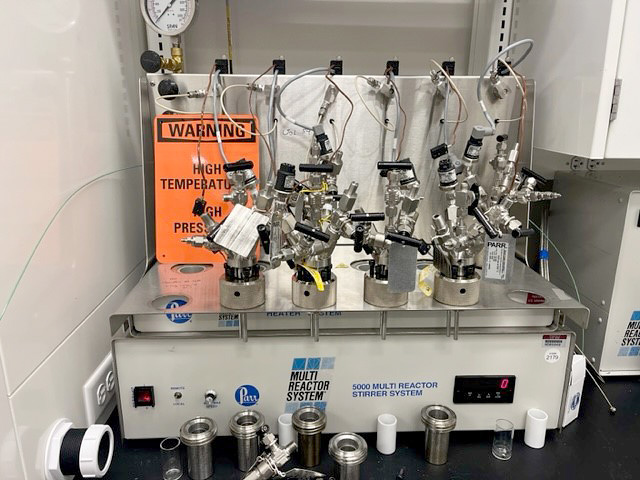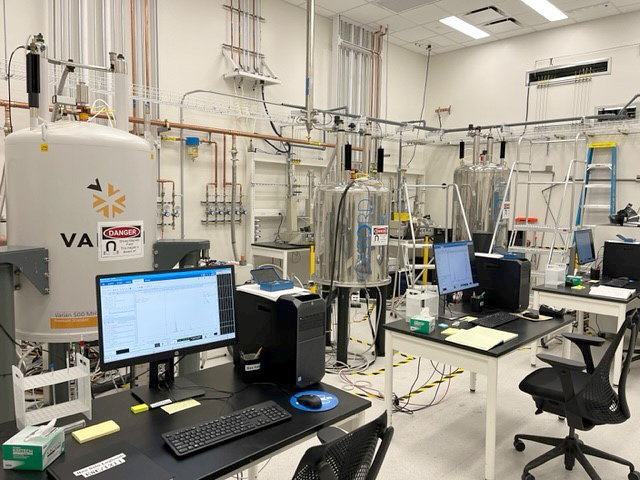Liquid Organic Hydrogen Carrier Kinetics and Catalyst Testing
Category
Characterization Tools
Laboratory
Pacific Northwest National Laboratory (PNNL)
Capability Expert(s)
Mark Bowden ([email protected]), Tom Autrey ([email protected])
Description
Batch Reactor Kinetics
PNNL uses a bank of autoclave reactors to test catalyst reactivity, selectivity, and durability and measure rates of hydrogen of hydrogen uptake and release as a function of temperature (25°C to 200°C) and pressure (1 to 100 bar) by liquid organic hydrogen carriers under isochoric and reaction isobaric conditions. The bank of reactors allows for testing of different catalyst composition or the same catalyst composition under variable temperature and pressure conditions. Under isobaric conditions hydrogen gas production rates are measured with a gas flow meter and the gas composition (hydrogen purity) can be analyzed by a residual gas analyzer. Non-volatile liquid products are determined by 1H and 13C nuclear magnetic resonance (NMR) or using a high-performance liquid chromatograph (HPLC) to quantify. Inert atmosphere (nitrogen, argon, helium) is available for loading reactors.
Plug Flow Reactors
PNNL utilizes a HPLC pump to flow liquid organic hydrogen carriers into reactor columns packed with supported catalyst materials. A heated pre-column is used to heat the liquid before it enters the catalyst packed column and a gas liquid separator. The gas is passed through a flow meter to determine rates of hydrogen production as a measure of flow rate, catalyst composition, and liquid flow rates. The composition of the gas (hydrogen purity) is determined by micro-gas chromatograph. This capability provides an approach to measure long term catalyst durability and measure rates of gas production over several days.
Figures
Six-bank autoclave reactor with independent temperature and pressure control. Liquid phase multi-nuclear (1H, 11B, 13C, 15N, 31P) NMR capabilities for ex-situ analysis. In-situ high pressure capability for follow reaction kinetics under variable pressure up to 1,000 bar.


Status
Currently available for use in collaboration with HyMARC.
Description
- B. Tran, S. Johnson, K. Brooks, and T. Autrey, "Ethanol as a Liquid Organic Hydrogen Carrier for Seasonal Microgrid Application: Catalysis, Theory, and Engineering Feasibility," ACS Sustainable Chemistry and Engineering 9 (2021): 7130−7138.
- K. Grubel, J. Su, J. Kothandaraman, K. Brooks, G. Somorjai, and T. Autrey, "Research Requirements to Move the Bar Forward Using Aqueous Formate Salts as H2 Carriers for Energy Storage Applications," Journal of Energy and Power Technology 2 (2020): 016.
